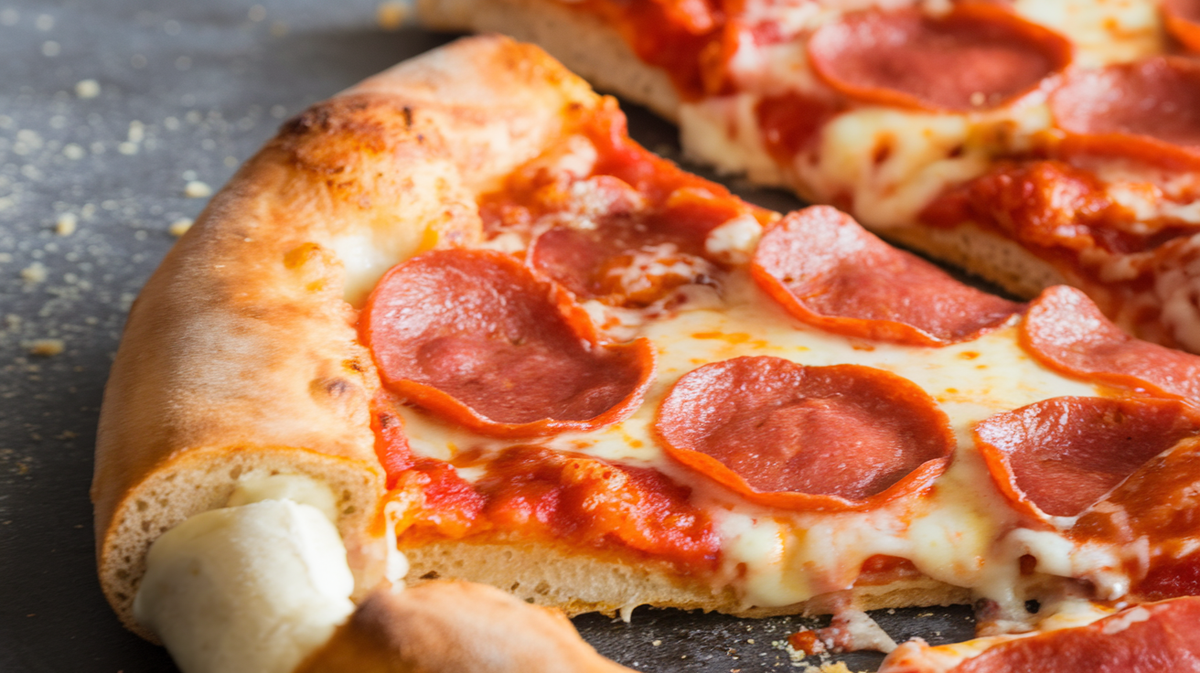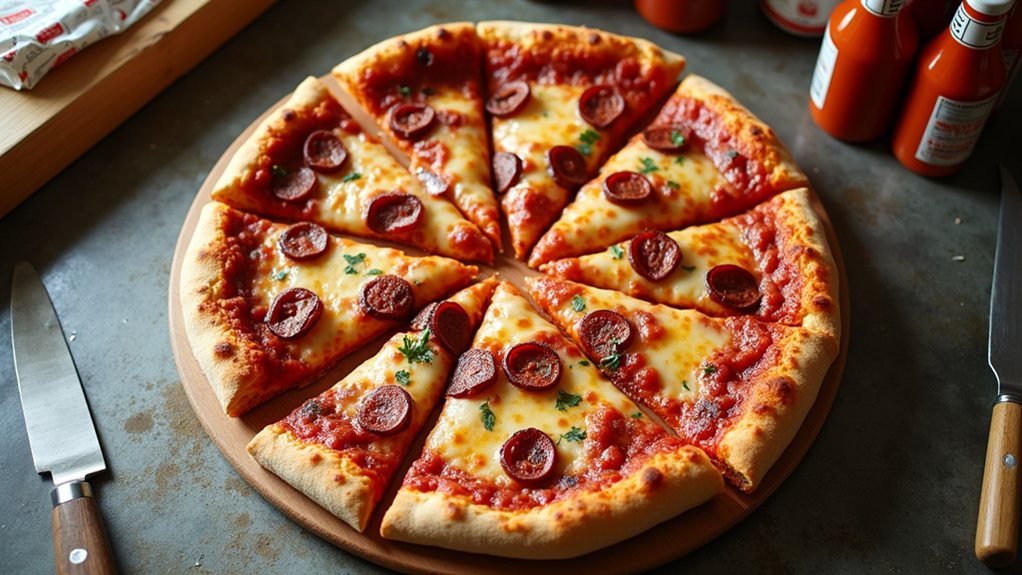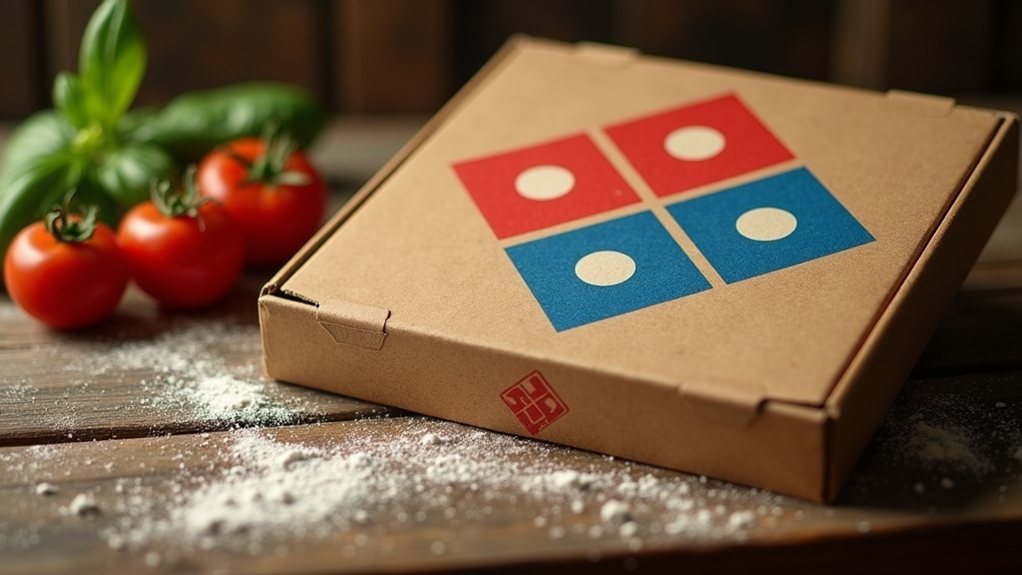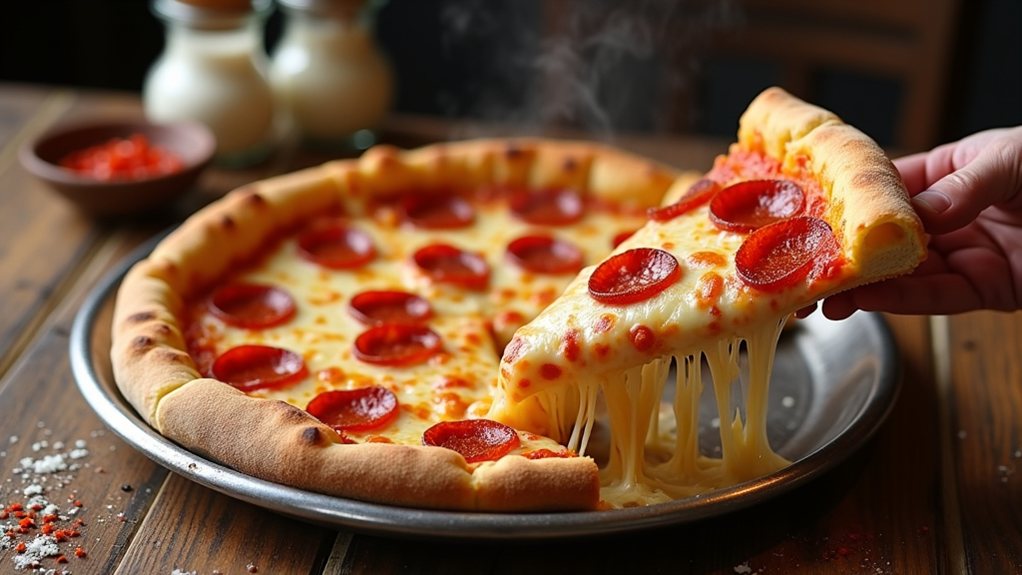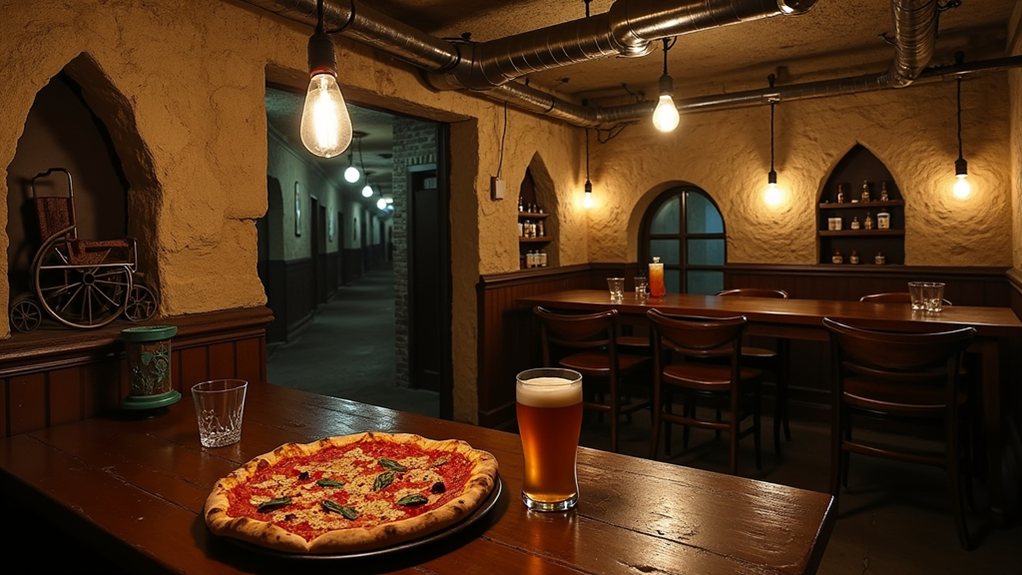I’ve spent years perfecting my Stuffed Crust pizza, uncovering that precision matters more than passion when creating restaurant-quality pies at home. From measuring flour to the gram to timing fermentation down to the hour, these small details transform ordinary dough into something extraordinary. I’ll share my tested techniques for achieving that perfect balance of crispy exterior and chewy interior, along with secrets for a sauce that complements rather than overwhelms. What is the difference between good and great pizza? It’s all in the details.
The Science Behind Perfect Pizza Dough
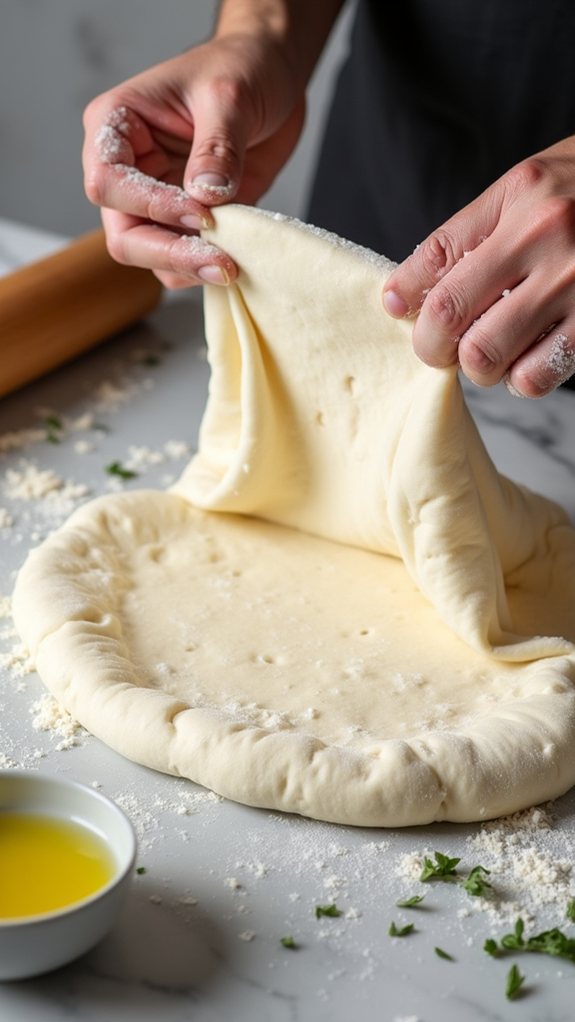
In regard to creating the perfect homemade pizza, understanding the science behind your dough is essential.
I’ve found that precision in measurements makes all the difference—270g of warm water, 5g of yeast, and 450g of flour with 11.7% protein content create the ideal foundation.
The protein percentage matters because it affects gluten development, which gives your crust its characteristic chew and structure.
When I mix my ingredients, I focus on proper fermentation timing, allowing the dough to rise about 30% during the initial hour.
This slow development, followed by cold fermentation in the refrigerator, creates complex flavors that just can’t be rushed.
Using a wooden spoon to mix the initial ingredients helps prevent overworking the dough before the kneading stage begins.
Mastering the Art of Dough Fermentation
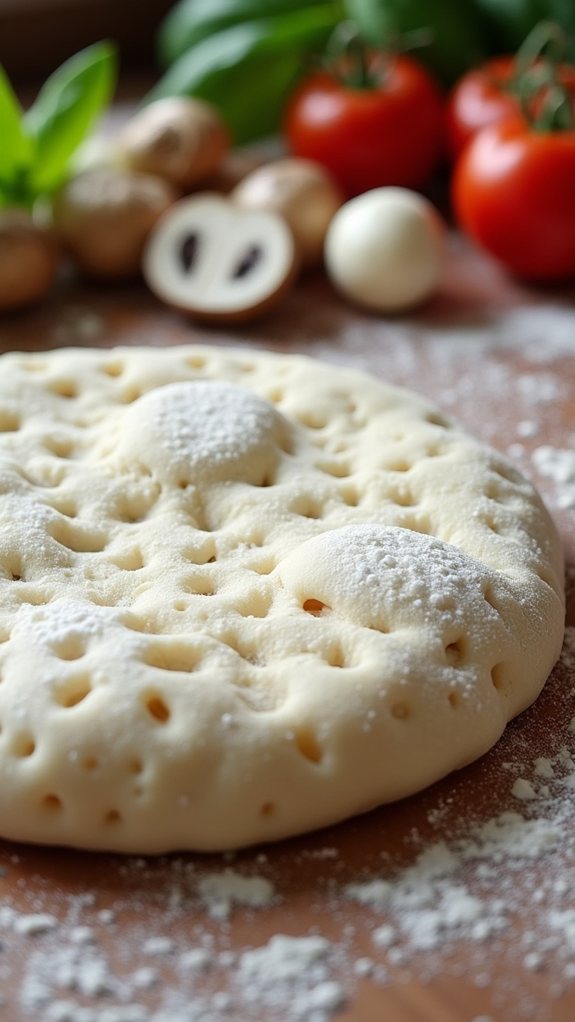
While most home bakers rush through the fermentation process, I’ve uncovered that patience truly rewards you with exceptional flavor development in pizza dough.
After mixing your ingredients and performing that initial 30-minute fermentation, don’t skip the vital folding step that builds strength in your dough.
The magic really happens during cold fermentation, where complex flavors develop over 24-48 hours in your refrigerator.
I’ve found that a properly fermented dough rises just 25-30% in the fridge, creating that perfect balance of structure and tenderness.
Let the dough come to room temperature before shaping for best results.
Using traditional Neapolitan techniques, aim for a soft and elastic dough that maintains its structure when stretched thin.
Essential Tools and Ingredients for Authentic Pizza

Now that you’ve mastered dough fermentation let’s focus on assembling your pizza-making arsenal.
Every great pizza starts with quality ingredients: all-purpose flour with 11-12% protein, instant yeast, olive oil, and salt from your dough foundation.
For equipment, I can’t stress enough the value of good pizza steel, which conducts heat better than stones.
You’ll also need a reliable kitchen scale for precise measurements, a stand mixer to save your arms, and high-quality parchment paper.
Don’t forget an immersion blender for smooth sauce preparation and a cheese grater for that perfect melt.
Consider using a pizza stone or preheated baking sheet for a crispier crust when baking your pizza.
Crafting the Ultimate Pizza Sauce From Scratch

The heart of any exceptional pizza lies in its sauce, which brings together all the flavors and improves your homemade creation from good to outstanding.
I’ve found that combining 150 grams of tomato paste with carefully balanced seasonings creates the perfect concentrated base.
Start by mixing your paste with salt, sugar, black pepper, and aromatic herbs like basil and oregano.
Don’t forget the garlic and onion powders, which add depth without overwhelming.
Add olive oil and water, then blend everything for 15-20 moments until smooth.
The result? A slightly sweet, richly flavored sauce that perfectly complements your handcrafted dough.
Cheese Selection and Preparation Techniques
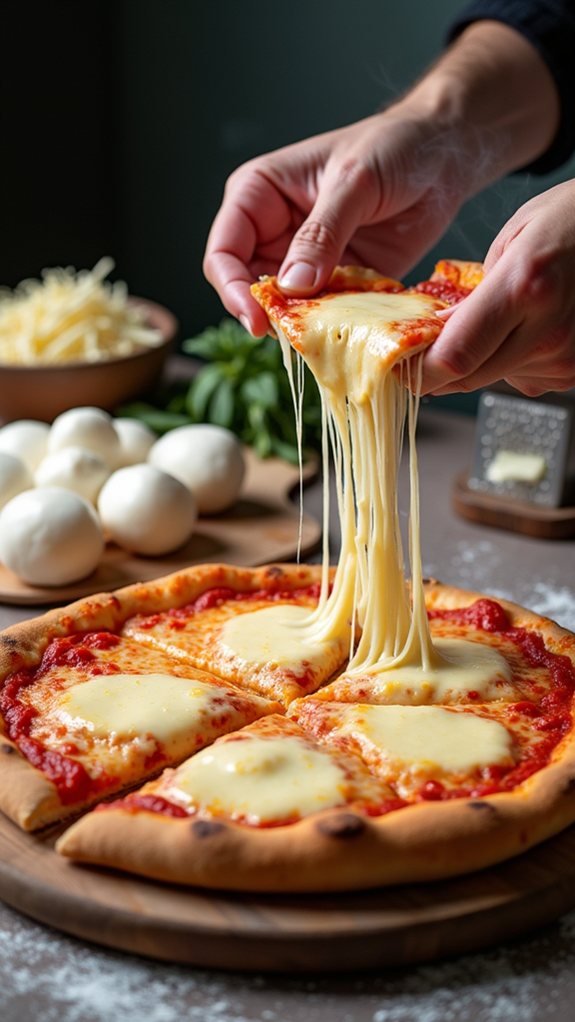
Selecting the right cheese blend is perhaps the most crucial decision you’ll make for your homemade pizza.
I’ve found that a 3:1 ratio of full-fat mozzarella to mild provolone creates the perfect balance of richness and stretch. The mozzarella provides that creamy foundation we all crave, while provolone adds complexity and that Instagram-worthy cheese pull.
For stuffed crust lovers, try cutting provolone into 2-inch batons—about 16 to 20 per pizza—and tucking them into the folded edge.
Remember to grate your cheese yourself; pre-shredded varieties contain anti-caking agents that prevent proper melting.
Creating a Stuffed Crust That Doesn’t Leak
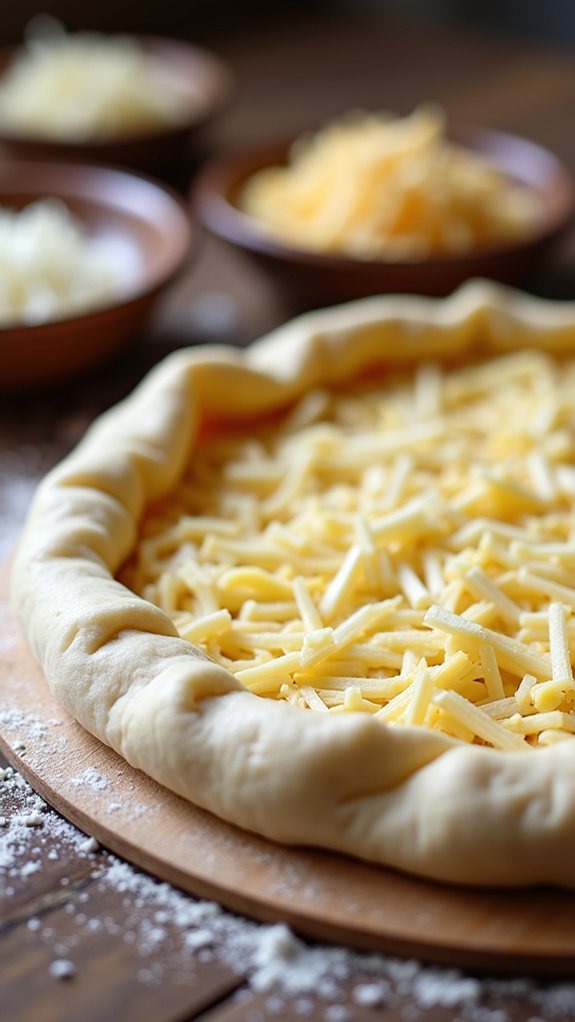
Creating a stuffed crust that doesn’t leak during baking begins with a proper sealing ng technique, which I’ve perfected after numerous cheese-oozing disasters.
Roll your dough into a 14-inch round, then dust with fine cornmeal for easier handling.
The secret lies in how you fold the edge—grab a 3-inch section of crust, place cheese batons along the perimeter, and then fold the dough over completely.
Press firmly with your fingertips to create a tight seal that traps the cheese inside.
Work your way around the entire pizza, ensuring each section is properly secured before adding sauce and toppings.
Baking Methods for Restaurant-Quality Results at Home

To achieve restaurant-quality pizza at home, you’ll need to recreate the intense heat conditions found in commercial pizza ovens. I’ve tested different methods over the years and compiled this handy reference for you to experiment with.
| Method | Temperature | Cooking Time | Equipment Cost | Results |
|---|---|---|---|---|
| Pizza Stone | 500°F | 7-8 minutes | $30-50 | Good crust, even cooking |
| Baking Steel | 550°F | 6-7 minutes | $75-100 | Exceptional crisp bottom |
| Home Oven Broiler | 550°F+ | 5-6 minutes | Free | Quick top browning |
| Outdoor Grill | 600°F+ | 4-5 minutes | Varies | Smoky flavor profile |
| Ooni Pizza Oven | 900°F+ | 60-90 seconds | $300+ | Closest to pizzeria results |
FAQs
Can I Use a Pizza Stone Instead of a Steel?
Yes, you can use a pizza stone instead of steel. I’d recommend preheating it thoroughly, though steel conducts heat better and gives a crispier bottom crust.
How Do I Prevent My Pizza From Sticking to the Peel?
I liberally dust my peel with cornmeal or flour before building my pizza. I never let the dough sit too long, and I give it a gentle shake to confirm it’s loose.
What’s the Best Way to Reheat Leftover Pizza?
I’d reheat leftover pizza in a covered skillet on medium-low heat for 3-5 minutes. The lid traps steam, melting cheese while keeping the bottom crispy—much better than microwave methods.
Can I Freeze Pizza Dough for Later Use?
Yes, I freeze my pizza dough all the time! After the initial rise, I tightly wrap dough balls in plastic and freeze them for up to 3 months. Just thaw overnight before using.
How Do I Achieve a Crispy Bottom Without Burning the Toppings?
I’d recommend using a pizza steel on the bottom rack, preheating thoroughly at maximum temperature, and slightly reducing cheese quantity to prevent excessive moisture on your pizza.
